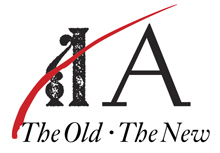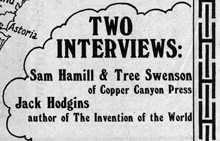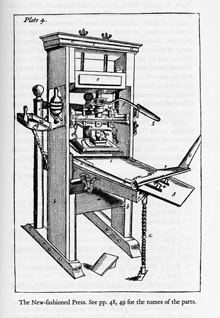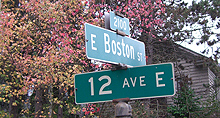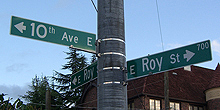This has nothing to do with design or typography (except in the larger sense that we design the society we live in), but it’s topical and seems worth recording.
The Washington State Democratic caucuses were mobbed. Four years ago, before the last presidential election, they’d set a record, with about 100,000 in attendance; this year it was double that. I remember the crowding last time, when a whole bunch of local precincts met in the same large hall at a school (I think it was) somewhere across town; this year there were fewer precincts, and we met in the gymnasium of an elementary school just a few blocks away, but it was every bit as jam-packed. And chaotic. You had to push your way through the crowd just to sign in, and once you’d done that, it wasn’t clear what else there was to do, except wait.
It was hot. It was loud, though no one voice could be heard clearly through it all. There were different groups around the hand-lettered signs for each precinct — a few folding metal chairs, all occupied, and a continuous crowd of people standing or trying to thread their way through, in one direction or another. The whole thing seemed ill-planned, and unable to cope with the numbers. (Funny, that’s exactly the way it felt four years ago. Don’t they learn?)
It was unpleasant enough that when Eileen found someone who told her that, if we’d signed in with our preference and we weren’t planning on changing it, we could simply go, that’s what we did. I was glad I hadn’t done what I was thinking of at first, and signed in either as uncommitted or as a John Edwards supporter, just to make a point about how Edwards had been right on the issues; then I would have had to stick around for the discussion (if anything could be heard in that madhouse) in order to change my vote to Obama.
There didn’t seem to be any rancor; a lot of people, like me, liked both candidates, despite the news media’s efforts to manufacture a scenario of opposing camps of true believers. (I suppose there must a few, somewhere. I haven’t met any, though.) It seemed a hopeful crowd.
From local news reports, I gather than our caucus was typical; they were all over-crowded, even the Republican ones. (Though in our neighborhood, I’d be surprised if the Republicans could have filled a living room. But you never know.) I never even found out the results for our own precinct (it didn’t happen to be one of the ones picked by the news media to mention, and I hadn’t stuck around to find out first-hand), but it seems that across the state, Obama has won hands-down. In fact, in most areas, he’s won 2-to-1. (Actually, I just checked the Washington Democrats’ website; it doesn’t break the results down to the precinct level, but in our legislative district, it’s more like Obama 3-to-1.)
So that’s the caucus process. Simpler than it was four years ago, when there were more choices and I had to stay around and negotiate with people who supported other candidates, and ultimately change my own vote. This time, with only two candidates left in the race, it was just a matter of making a choice. Either one would be a good president, but Obama’s more promising.
Meanwhile, just to keep things interesting, Mike Huckabee won the Kansas caucuses, so he can continue to be a thorn in John McCain’s side. “Confusion to your enemies!”
Gonna be an interesting year.
Categorized as events |

